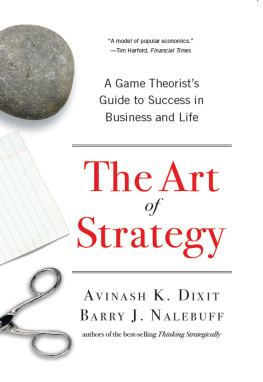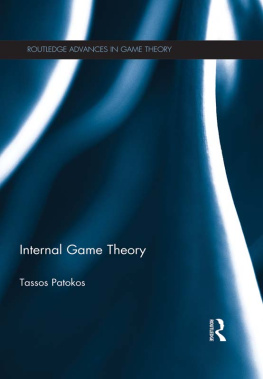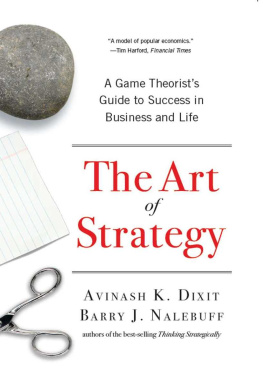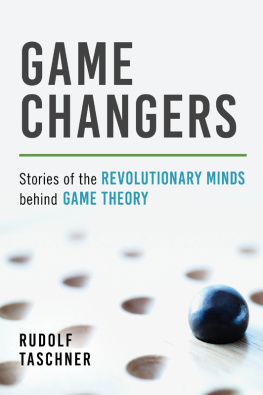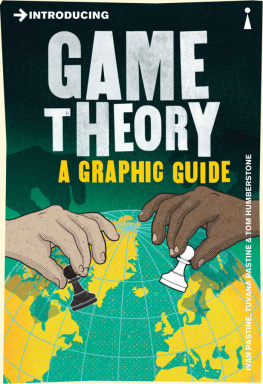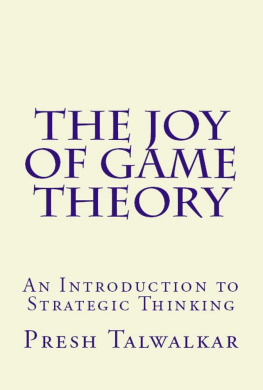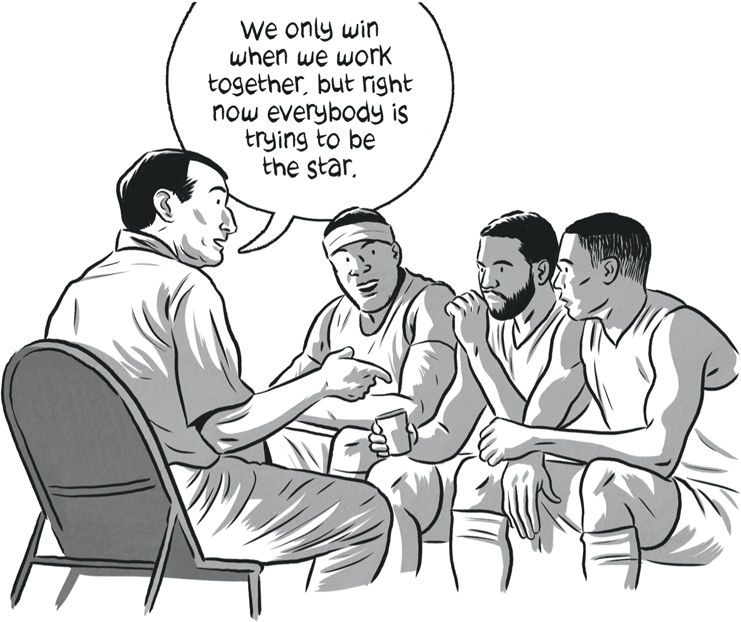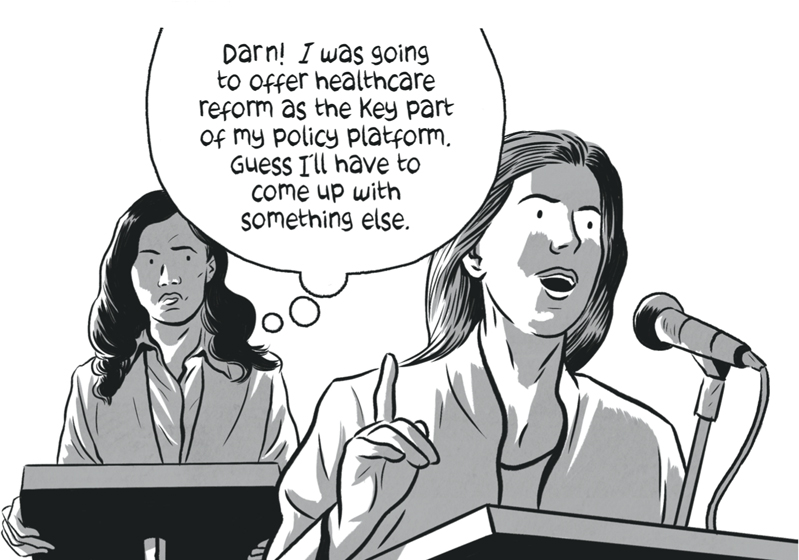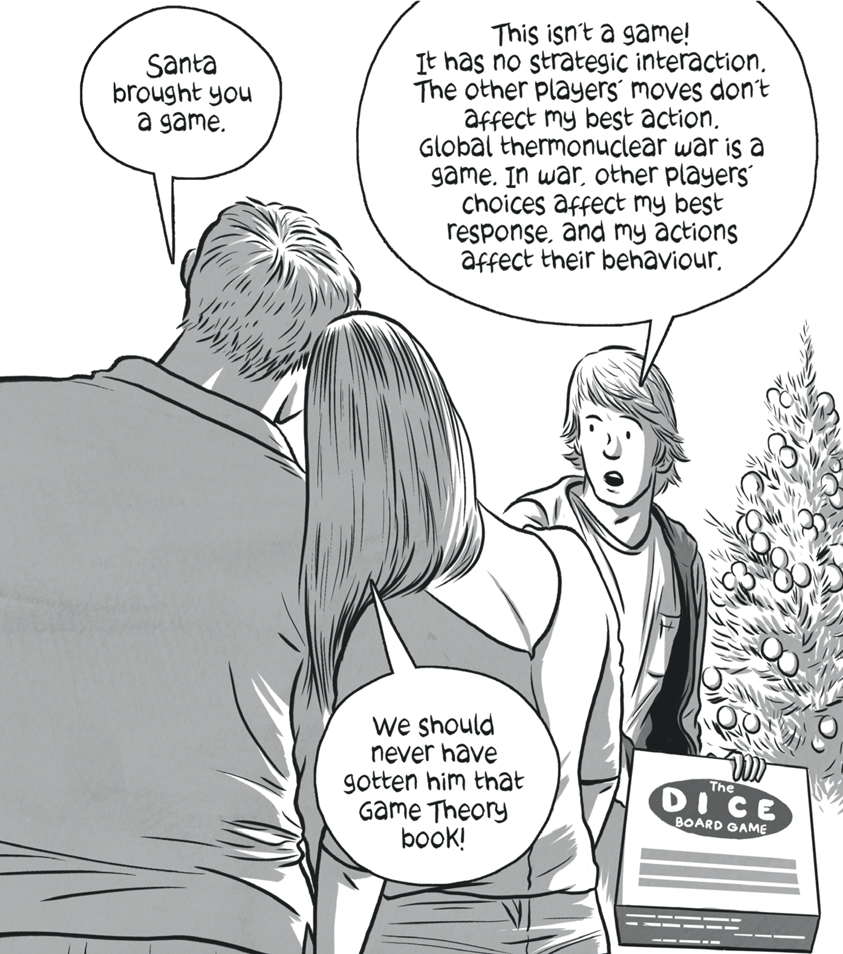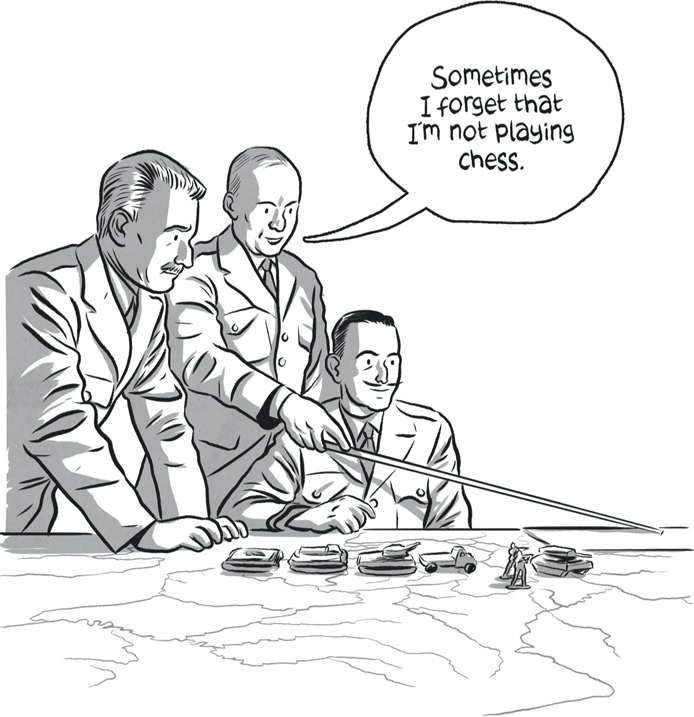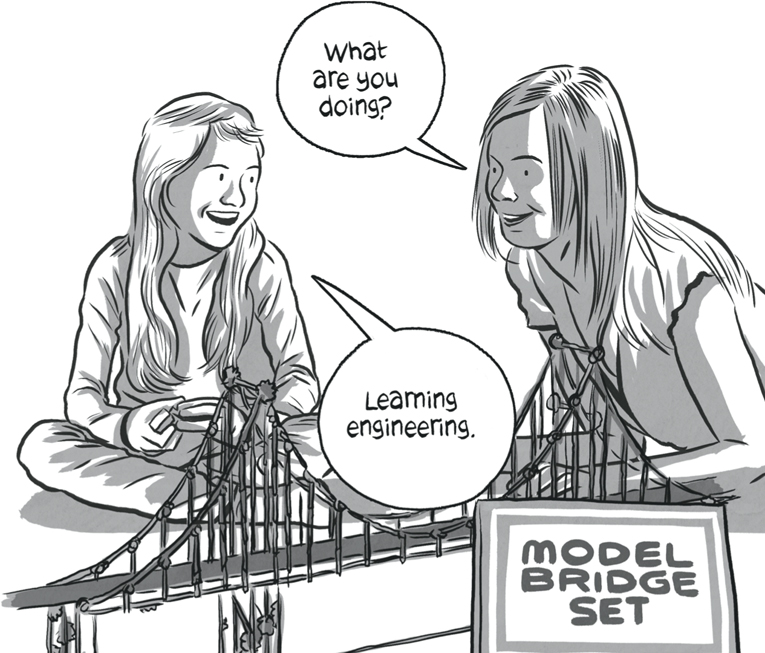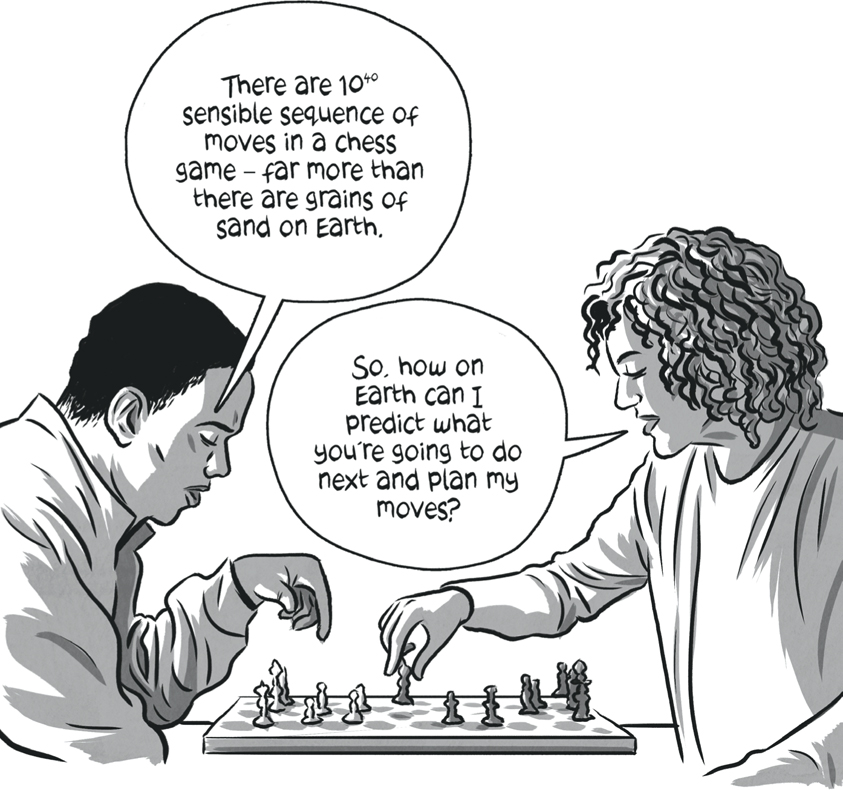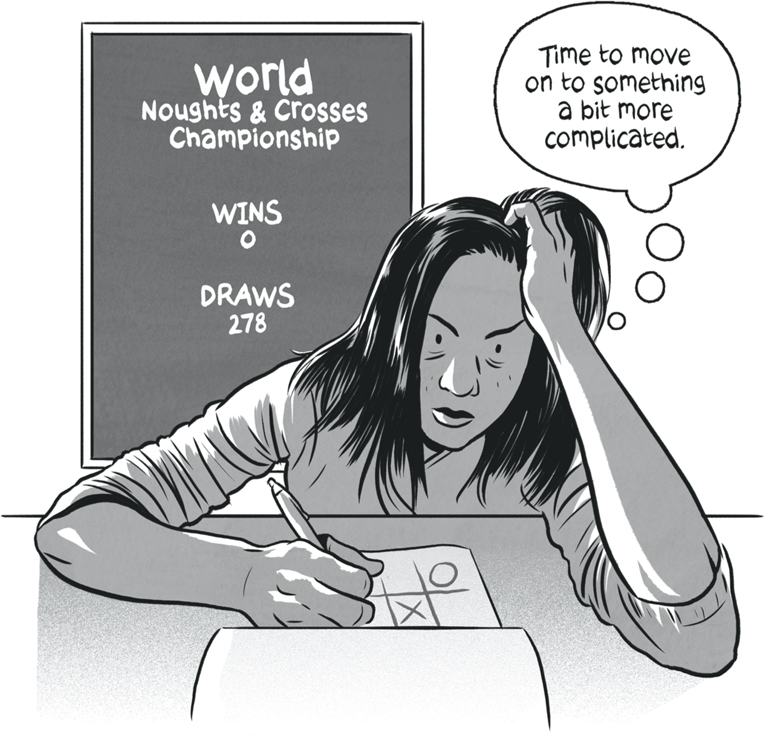Contents
Published by Icon Books Ltd, Omnibus Business Centre, 3941 North Road, London N7 9DP
Email:
www.introducingbooks.com
ISBN: 978-178578-083-7
Text copyright 2017 Icon Books Ltd
Illustrations copyright 2017 Icon Books Ltd
The author and illustrator have asserted their moral rights
Editor: Kiera Jamison
No part of this book may be reproduced in any form, or by any means, without prior permission in writing from the publisher.
What is game theory?
Game theory is a set of tools used to help analyze situations where an individuals best course of action depends on what others do or are expected to do. Game theory allows us to understand how people act in situations where they are interconnected.
Connections between people arise in all sorts of situations. Sometimes through cooperation with others we can achieve more than we can on our own. Other times conflict arises where an individual benefits at the expense of others. And in many situations, there are benefits to cooperation but elements of conflict also exist.
We only win when we work together, but right now everybody is trying to be the star.
Because game theory can help analyze any environment where a persons best action depends on others behaviour, it has proven useful in a wide variety of fields.
In economics, the decisions of firms are affected by their expectations of a competitors choice of product, price and advertising.
In political science, a candidates policy platform is influenced by the policy announcements of their rival.
In biology, animals must compete for scarce resources, but can be hurt if they are too aggressive with the wrong rival.
In computer science, networked computers compete for bandwidth.
In sociology, public displays of non-conformist attitudes are influenced by others behaviour, which is shaped by social culture.
Darn! I was going to offer healthcare reform as the Key part of my policy platform. Guess Ill have to come up with something else.
Game theory is useful whenever there is strategic interaction, whenever how well you do depends on the actions of others as well as your own choices. In these cases, peoples actions are influenced by their expectations of others actions.
Santa brought you a game. This isnt a game! It has no strategic interaction. The other players moves dont affect my best action. Global thermonuclear war is a game. In war. other players choices affect my best response, and my actions affect their behaviour. we should never have sotten him that Game Theory book!
Why is it called game theory?
Game theory is the study of strategic interaction. Strategic interaction is also the key element of most board games, which is where it gets its name. Your decision affects the other players actions and vice versa. Much of the jargon of game theory is borrowed directly from games. The decision makers are called players. Players make a move when they make a decision.
Sometimes I forget that Im not playing chess.
Working with models
Real-world strategic interaction can be very complicated. In human interaction, for instance, its not just our decisions, but also our expressions, our tone of voice and our body language that influence others. People bring different histories and points of view to their dealings with others. This infinite variety can create very complex situations that are difficult to analyze.
We can circumvent this complexity by creating simplistic structures, called models. Models are simple enough to analyze but still capture some important feature of the real-world problem. A cleverly chosen simple model can help us learn something useful about the complex real-world problem.
what are you doing? Learning engineering.
The game of chess is useful for understanding the complexity that variation brings to playing (and to predicting) games and outcomes. There are well-defined rules in chess. There are a limited number of options in each move. Yet the complexity of the game is daunting even though it is much simpler than even the most basic human interaction.
There are 1040 sensible sequence of moves in a chess game far more than there are grains of sand on Earth. So how on Earth can I predict what youre soins to do next and plan my moves?
Its a draw.
One feature of complex board games like chess is that the more skilled the players are, the more frequently the game ends with a draw. How can we explain this observation?
Since chess itself is too complex to fully analyze, lets use a simple model that captures some of the important features of the chess game: noughts & crosses (tic-tac-toe). Both chess and noughts & crosses have well-defined boards and victory conditions. Players take turns making choices from a limited selection of possible moves.
There is quite a lot going on in chess that is not captured by noughts & crosses. But because the two games share some important features, noughts & crosses can help improve our understanding of why skilled players tend to end the game with a draw.
By playing tic-tac-toe I an learning about chess. Quit Stalling and move already!
Noughts & crosses is fun for small children. While the game between unskilled players tends to have a victor, after a bit of practice you quickly learn to reason via backward induction: you can figure out your opponents response to your possible actions and take that into consideration before making your own move.
Once players learn to reason via backward induction, all noughts & crosses games are likely to end in a draw. In this way, noughts & crosses works as a simple model of chess, in which there are far more possible moves, but which, when played between skilled players is also likely to end in a draw.
Time to move on to something a bit more complicated.
Dealing with complexity: art and science
The primary concern of game theory is not board games like chess. Rather, its aim is to improve our understanding of interactions between people, companies, countries, animals, etc., when the actual problems are too complex to fully understand.



